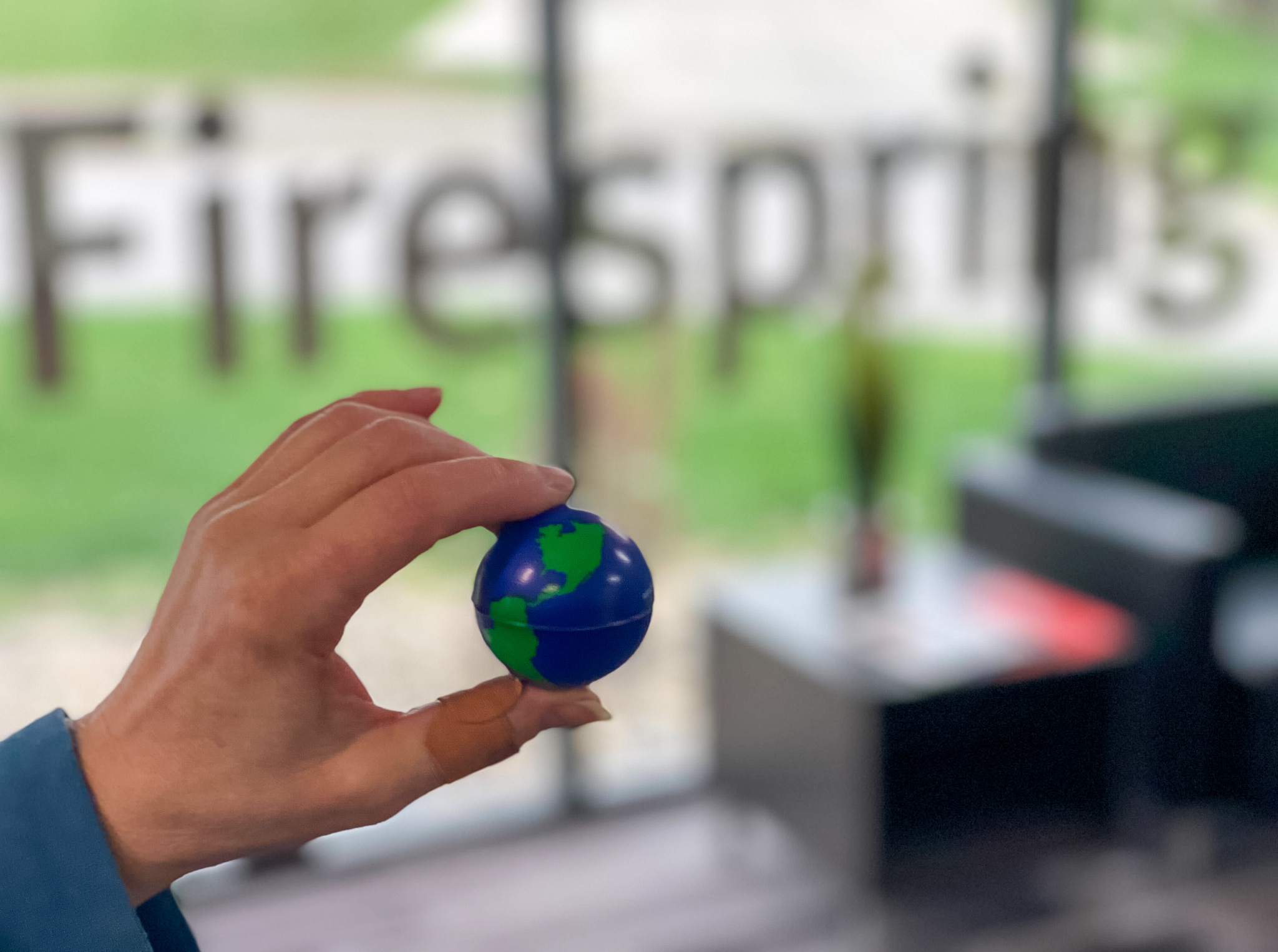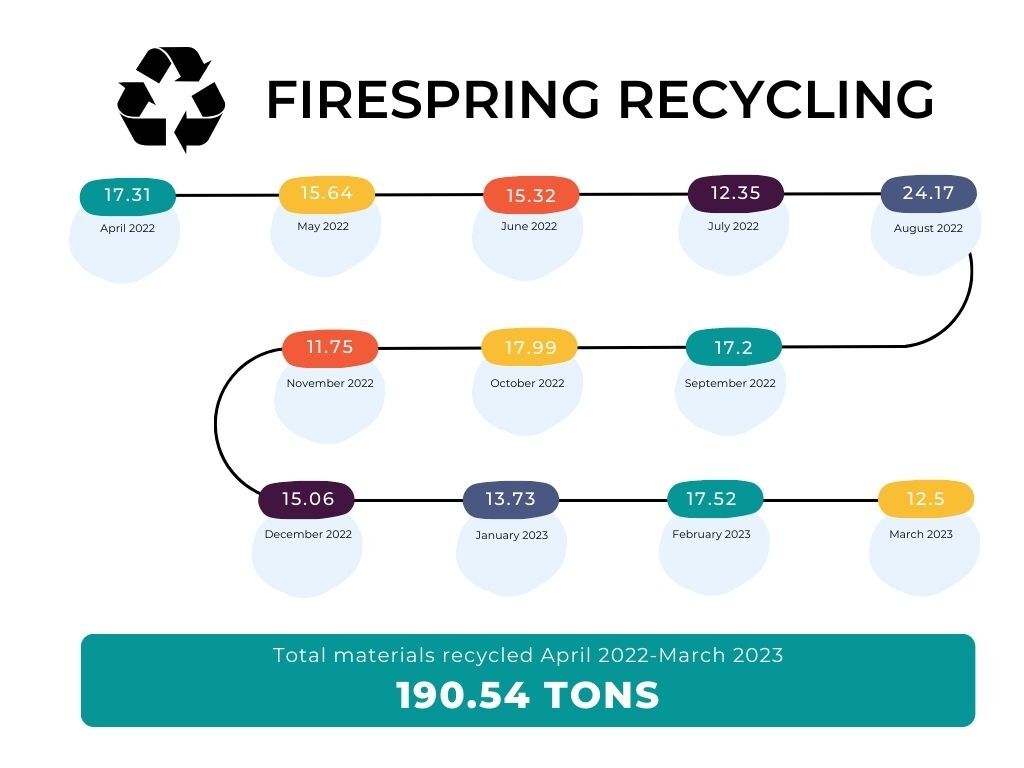Happy Earth Day!
First celebrated in 1970 at schools and colleges across the United States, Earth Day is now observed in more than 193 countries worldwide every April 22.
Although this important holiday comes just once a year, we at Firespring believe this beautiful blue planet of ours deserves celebrating each and every day. That’s why we’re always shooting for new and better ways to reduce our carbon footprint—especially the sustainable printing aspect of our business.

For Firespring, sustainability in printing (and business overall) is more than just a catch phrase: It’s a crucial aspect of our day-to-day operations, which we take great pride in embracing and integrating throughout our company. We work diligently and systematically to reduce or eliminate waste and approach resource management with the planet in mind.
For this Earth Day blog, we sat down with Travis Gueret—our VP of print production—to dive into the three main focuses of our company-wide sustainability efforts: efficiency, recycling and using eco-friendly materials wherever possible.
Efficiency
As Travis explained, efficiency at Firespring means a lot more than just providing deliverables to our clients on time (though, of course, it helps with that, too). It also means adapting and constantly improving the processes and equipment that make us tick, so we can create as little waste and use as few natural resources as possible.
One of the most exciting ways we do this is by adopting more efficient processes and better equipment at every turn.
The neat part of “evolving with the times” is that, when we take the environment into consideration, it usually ends up being good for business, too. For example: by upgrading two of our print machines to more cutting-edge models, we recently improved labor costs and set-up times (good for the company) while slashing our power consumption (good for the planet). A similar example of this synergy is the recirculating system in use by some of our printing presses; by keeping water cool as it flows through the press to reduce evaporation, this design saves us money on overall water usage.
“We’re always coming up with new ways to be efficient at Firespring,” said Travis. “That might mean upgrading our equipment to cut down on waste as much as possible.”
In the same vein, all our energy usage—including that of our facilities—is monitored as part of an ongoing effort to optimize power consumption. Jeff Norris, our properties and construction manager, has taken the reins for this all-important job.
“Some of our recent sustainability efforts include switching to LED bulbs and fixtures, installing smart thermostats, cleaning A/C condensers and coils, improving air compressor efficiencies and adding two electric vehicle charging stations in our employee parking area,” Jeff said. “This has created a huge drop in electricity usage equivalent to 183,900 kilowatt-hours saved. In terms of carbon emissions, that’s roughly 15,000 gallons of gas.”
(A big shoutout to our friends at Lincoln Electric System for helping us with our energy saving efforts.)
Recycling

Recycling is a two-fold process in our print shop. (And a never-ending effort.) To start with, we try to use as much recycled or partially recycled paper as possible.
“The majority of our paper has some recycled content to it, usually at about the 10% range,” explained Travis. “This will hopefully become even more of a print industry standard as shops work to reduce their environmental impacts.”
The second half of the equation involves recycling all the material we can.
Here’s a free tip: When you’re in the printing business, there’s a lot of excess paper to deal with. Trimming and cutting booklets, pamphlets, brochures, signage and other materials creates gads (you could say reams) of recyclable waste each and every day. There’s also the aluminum plates used in our printing presses, which are recyclable.
This graphic shows how many tons of materials we recycled in the past 12 months. (Spoiler alert: we’ve recycled over 190 tons of materials! Thank you to our friends at First Star Recycling for the precise data.)

“Recycling and efforts to reduce waste are a big part of our day-to-day operations and something we are really proud of,” said Travis.
Eco-friendly Materials
The final part of the sustainable printing equation involves choosing materials that are environmentally safe, like non-toxic, non-hazardous inks and glues.
Eco-solvent ink—which is ink created using sustainable materials—is the go-to at Firespring. The same goes for our binding glue. In terms of waste disposal, excess ink is collected and recycled. (Or used in creative ways. Check out this art project created out of ink waste by former Firespringer Amanda Russell.)
Conclusion
Caring for the environment is the responsibility of every business, no matter how large or small. Earth Day is the perfect time to remind each other why that’s so important—and maybe, just maybe, to trade ideas and inspiration for protecting our world. In fact the two are not mutually exclusive: Often, the harder we work to be considerate of the planet we share, the more we gain when it comes to bettering our companies and serving our customers. Finding and embracing that balance—that is, striving to do more good while we do more business—is a true recipe for success.

